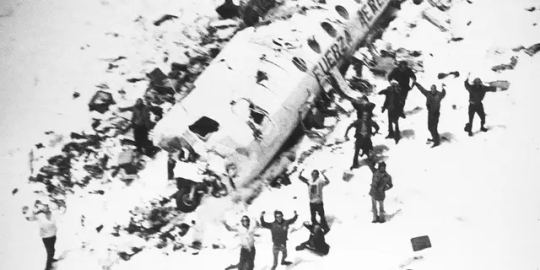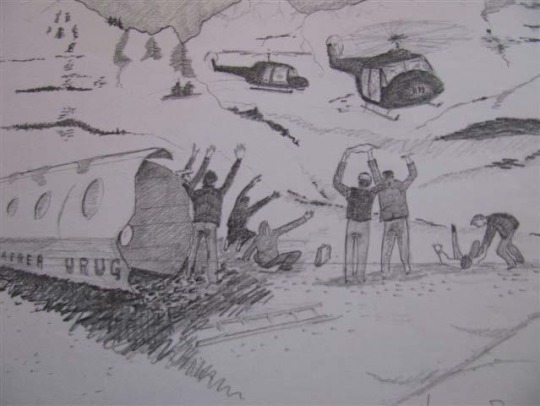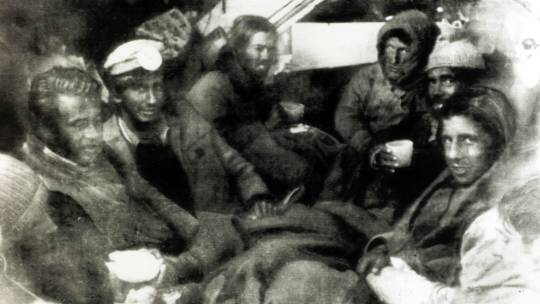#Roberto Delgado
Explore tagged Tumblr posts
Photo



Calaveras :)
4 notes
·
View notes
Text
Siembra y Navaja

Coliseo de Puerto Rico, 14 de mayo de 2022

Siembra 45° Aniversario


Siembra Fania (1978). Considered the best selling salsa album in the history of salsa music. The album was inducted into the Latin Grammy Hall of Fame in 2007 and named one of the 50 greatest salsa albums of all time by Rolling Stone Magazine in October 2024.

Pedro Navaja - Rubén Blades live 1990
0 notes
Text
#nowplaying#Anouk#MUCC#Johann Sebastian Bach#Placebo#Westernhagen#Wenzel#Wise Guys#Minnie Driver#Andreas Albrecht#Roberto Delgado#Pavlov's Dog
0 notes
Text
Los precios para ver a Rubén Blades en Santo Domingo
El multifacético músico, actor y activista panameño, Rubén Blades presentará su “Salsaswing tour!” junto a la Roberto Delgado y Orquesta de Panamá, el próximo 29 de septiembre, en el Pabellón de Volleyball en el Centro Olímpico Juan Pablo Duarte. La leyenda de la música latinoamericana celebrará con el público dominicano sus más de 50 años de carrera musical, con una propuesta única que…

View On WordPress
#Los precios para ver a Rubén Blades en Santo Domingo#Orquesta de Panamá#Roberto Delgado#Rubén Blades#Salsaswing tour
0 notes
Text


Alfredo "Pancho" Degalo and Roberto Canessa
#i need his gender like right now#not sure who im saying that in regards to#anyway#Pancho Delgado#Alfredo Pancho Delgado#roberto canessa#Flight 571#i CANNOT for the life of me remember where i got these photos. i think???? instagram???#im so sorry for the lack of information. i just need to share these photos w the world bc i love these men so much#im not sure what to add as the alt id but please tell me if you need them!
5 notes
·
View notes
Text
HOW LONG DO WE HAVE TO WAIT CAPCOM?
#batsu ichimonji#shoma sawamura#roy bromwell#akira kazama#raizo imawano#hyo imawano#kyosuke kagami#hinata wakaba#boman delgado#tiffany lords#natsu ayuhara#roberto miura#eiji yamada#gan isurugi#hideo shimazu#kyoko minazuki#rival schools#capcom#1up
4 notes
·
View notes
Text

Roger Caesar Marius Bernard de Delgado Torres Castillo Roberto
1 note
·
View note
Text
That last gif is a man rethiinking quite a few of his life choices...
It's made even funnier when you remember that he's go on to do the exact same thing, with the exact same lack of forethought, on multiple occasions.






The Nestenes are here.
#the master#roger delgado#jon pertwee#doctor who#Roger Caesar Marius Bernard de Delgado Torres Castillo Roberto
457 notes
·
View notes
Text
No juzgues lo que no has visto, ve y decide… “Ellas Soy Yo, Gloria Trevi”

Gloria de los Ángeles Treviño Ruíz, de tan solo quince años, viaja desde Monterrey a Ciudad de México para participar en un concurso televisivo. Un hombre que le dobla la edad la contempla en la pantalla, este se convertirá en su mentor y luego en su depredador.
Durante los 17 años siguientes la someterá a un viaje aterrador en el que, después de alcanzar el éxito y la fama, ella perderá todo y tendrá que empeñarse a fondo para sobrevivir y reconstruirse.
Estreno: 11 de agosto de 2023 en ViX.
youtube
La bioserie cuenta con la producción ejecutiva y dirección de escena de Carla Estrada y las actuaciones de Scarlet Gruber, Regina Villaverde, Lu Rosette, Valentina Delgado, Luka, Ingrid Martz, Patsy Pepping, Felicia Mercado, Norma Herrera, Gloria Mayo, Sebastian Fouilloux, Eduardo Capetillo, Roberto Blandón, René Strickler, Harry Geithner, Michel López, Nashla Aguilar, Sian Chiong, Jorge Poza, entre otros.

#Ellas Soy Yo Gloria Trevi#Scarlet Gruber#Regina Villaverde#Lu Rosette#Valentina Delgado#Luka#Ingrid Martz#Patsy Pepping#Felicia Mercado#Norma Herrera#Gloria Mayo#Sebastian Fouilloux#Eduardo Capetillo#Roberto Blandón#René Strickler#Harry Geithner#Michel López#Nashla Aguilar#Sian Chiong#Jorge Poza#Series#ViX
0 notes
Text
Rubén Blades, el Poeta de la Salsa, Enamora a Santo Domingo el Próximo 29 de Septiembre
El renombrado artista panameño, Rubén Blades, conocido como “El poeta de la salsa”, está listo para conquistar una vez más al público dominicano con su incomparable música. El próximo 29 de septiembre, los amantes de la buena música tendrán la oportunidad de disfrutar de un espectáculo inolvidable en el Pabellón de Volleyball, donde el músico se reunirá con su apasionada audiencia. El SALSWING…

View On WordPress
#Activista#Álbum SALSWING!#Artista Polifacético#boletas#concierto#descuento#Exitos#gira mundial#Latin grammy#Legado Musical#Leyenda Musical#música latina#Pabellón de Volleyball#Poeta de la Salsa#premios#Preventa#Roberto Delgado y Orquesta#Rubén Blades#SALSWING TOUR!#Santo Domingo
0 notes
Text
Cold Boys and Cannibalism
With today’s news concerning the identification of James Fitzjames’s remains—and the fact that those remains show signs of cannibalism—I have been thinking a lot about how those final, desperate days of the Franklin Expedition went down. But I’ve been thinking about those days in a particular light, one influenced by another special interest of mine: the Andes flight disaster.
The Andes flight disaster—aka the crash of the Uruguayan Air Force Flight 571, aka That Time In 1972 When A Uruguayan Rugby Team Was On A Plane That Crashed Into The Andes And They Had To Eat Their Dead Friends In Order To Survive—has long been a casual interest of mine. But earlier this year I watched the movie Society of the Snow, based on the book by the same name, and that kicked this interest into a full-blown hyper-fixation. I’ve been reading every book about it I can get my hands on, and I’m constantly trying to steer conversations towards mentioning it (“It’s a cold night tonight…but not nearly as cold as what the survivors of the Fairchild 571 had to endure on that mountain…”).
The Andes flight disaster has several similarities with the Franklin Expedition. They were stranded in the middle of nowhere, they had to endure freezing temperatures, and when the food ran out, they resorted to eating the flesh of their dead companions. There are also some major differences, of course, such as the Franklin Expedition being a purposeful exercise in exploration whereas the Andes flight disaster was an accident, and instead of highly trained members of the Royal Navy who followed a strict chain of command, the passengers on the F-571 were mostly pampered, upper-class, well-educated men in their late teens to mid-twenties, along with some friends and family, and there wasn’t an obvious leader or authority after the crash. But one of the main differences is that, unlike the Franklin Expedition, there were survivors of the Andes flight disaster.
Sixteen men survived 72 days on top of a mountain in the Andes, suffering through brutal temperatures, altitude sickness, starvation, an avalanche, and watching their close friends—and sometimes even their family—die. They were only saved when two of those survivors—Nando Parrado and Roberto Canessa—hiked ten days through the Andes to get help. When they were found, no one could believe it. These men had been written off as dead shortly after the crash. Despite only 16 out of 45 people making it out alive, their survival was hailed as a miracle. When they returned to Uruguay, they were treated like heroes.
Unfortunately, some members of the press were far more interested in painting these survivors as deranged savages. The rescue team had leaked photographs showing partially eaten body parts strewn around the wrecked airplane where the men had taken shelter. However, during a press conference on their return home, the survivors did not shy away from the truth. They admitted that they had only survived thanks to eating the flesh of those who had died. One of the survivors, Pancho Delgado, compared their eating of human flesh for physical salvation to the eating of Christ’s body for spiritual salvation. The largely Catholic country of Uruguay embraced this comparison.
The book Alive, written by Piers Paul Read using extensive interviews with the survivors taken shortly after their rescue, goes into some detail about the cannibalism that took place. It is not a book for the faint of heart. But even though the survivors have been very open about what they did, they still have attempted to distance themselves from this ultimate taboo by insisting that what they did wasn’t technically cannibalism but “anthropophagy.” Anthropophagy is the eating of human flesh, which the Andes survivors certainly did engage in, but they also very much did cannibalism. Survival cannibalism is the consumption of a member of your own species in order to survive, which is exactly what happened in the Andes—and what happened in the Arctic with the Franklin Expedition.
Every book I've read about the Andes flight disaster—Alive, Society of the Snow, and the several memoirs written by the survivors (14 of whom are still alive today)—all tell of the moment when the survivors decided they would eat the dead in order to live. Around the tenth day, after an agonizing and disappointing wait for someone to find them, several of the survivors spoke up. They had all been holding out hope that they would be rescued—their small food supply, mostly made up of snacks, candy, and alcohol, dwindling rapidly despite strict rationing—but it had become painfully clear that there would be no rescuers. No one was coming for them. And they had no food. They could only survive if they walked out, but they could only do that if they had the strength to do so. They needed to eat. There was only one way.
Some of the people who had survived the crash resisted the idea, while others fully supported it. Many put forth arguments for or against. Some said that they had a moral obligation to stay alive, and letting themselves die was wrong. Roberto Canessa, one of the two men who would later walk through the mountains to find help, was a nineteen-year-old medical student, and he emphasized the scientific side of things, explaining how they needed proteins to survive or their bodies would begin to break down. The religious explanation later used by Pancho Delgado at the press conference was actually first mentioned by one of the other survivors on that fateful day, Pedro Algorta.
I’m currently reading Algorta’s memoir, Into the Mountains. Early on in the book he too discusses that meeting of the survivors wherein they made the decision to eat the dead. He mentions the religious argument he had used. But he goes on to say that argument was merely an excuse and not the true reason he had supported cannibalizing the victims of the crash. He said that it was the emptiness of his stomach that had persuaded him. As he put it, “I was hungry and I wanted to live.”
When I read that line, my mind immediately went to the scene in AMC’s The Terror, where Lt. Hodgson spoke to Goodsir, telling him a story from his childhood about how he had once taken communion with his Catholic aunts, connecting it with the cannibalism Hodgson and Hickey’s mutineers had committed. He ended his speech with almost the exact same words used by Pedro Algorta, “I’m hungry and I want to live.”
I’m not sure if the Andes flight disaster influenced any aspect of this scene or not, but that sentiment shared by both the real-life Pedro Algorta and the fictionalized version of Lt. Hodgson is something vital to note when it comes to thinking about the cannibalism committed both by the Andes survivors and the Franklin Expedition.
Sure, it was around the tenth day in the Andes that they first cut into the body of someone they had once called a friend. But many of the survivors had already been thinking about eating the bodies for days. Nando Parrado, after waking up from a three-day coma to discover his mother had died in the crash and his sister was dying from severe internal injuries, was determined to walk out of the mountains to see his father again, even if it was the last thing he did. One day he was talking to fellow survivor Carlitos Páez about how they had run out of food. Nando told him he would not give in without a fight, and that if he had to, he would eat the pilot. Many others had similar thoughts, some keeping it to themselves while others discussed it among small groups of trusted friends. That conversation on the tenth day was merely a formality—they had already realized there was only one way to survive.
When it comes to the Franklin Expedition, we don’t know how that decision was made. When Fitzjames died, how long had the men around him been starving, their stomachs aching with hunger? Did the fading vestiges of the Royal Navy chain of command hold them back at all before they finally gave in to their bodies’ demands? Fitzjames was captain of the Erebus and third in command of the expedition. When Franklin died, he became second in command. There may very well have been an instance in which he became the leader of the expedition itself, depending on when Captain Crozier succumbed to the inevitable. Did his men see him as their captain still, or as merely a body, the man he was long gone and his flesh nothing more than something that could be used to prolong their own lives, same as how the Andes survivors saw the bodies of their dead friends?
As I mentioned before, the Andes survivors didn’t really have a firm authority figure. The pilot and co-pilot of the plane died in the crash, and none of them had really known those men, so they held no feelings of friendship or kind sentiment towards them. However, the rugby players did have a team captain, Marcelo Pérez del Castillo. Not everyone on board the flight was a rugby player—some were just friends or relatives of the players, others were only distantly connected and had just wanted a cheap ticket to visit Chile for a few days—but those who knew Marcelo respected him. Marcelo survived the crash but died in an avalanche that occurred sixteen days afterwards, killing eight of the survivors. The avalanche buried the plane, and the survivors were stuck inside for three days before they dug their way out. During those three days, they were cut off from the bodies of those who had died in the crash. With no other option, they were forced to feed on the eight who had died in the avalanche.
The survivors don’t like to specify which bodies they ate, out of respect for the families of those who died, but we know at least some of those who died in the avalanche were consumed. Marcelo may have been one of them. Even though he had once been the leader of the team and a friend of many of the survivors, his friends had no choice but to do what they needed to survive. And during that conversation on the tenth day, those who were still alive had vowed that their bodies could be used by the others for food if they passed away first. Marcelo had known what his body would be used for, and he had offered it up so that his friends could live.
Had Fitzjames done something similar? In AMC’s The Terror, there is a scene where he tells Crozier to give his body to the men, but that’s a fictional version of what happened. We don’t know what really happened to him, or to most of the Franklin Expedition. But it’s possible he did offer himself up, that he knew he could still be of some use even after his death. The Andes flight disaster shows us the extremes people will go to in order to survive—but also, it shows us the compassion and selflessness that can occur in those extreme situations as well. We think of cannibalism as a terrible act, but the Andes survivors also viewed it as an act of love on their parts, to have offered themselves to each other, willing to have their bodies be cut open and eaten to save their friends.
We think of what happened to Fitzjames as brutal, especially considering the cut marks on his face suggest a particularly sad desperation as the remaining men ate whatever last bits of flesh they could find. And since there were no survivors, there is no happy ending where the men came home, haunted but alive. Looking at other instances of survival cannibalism, however, what those men did is understandable. Cannibalism is seen as uncivilized—the first reports of cannibalism among the Franklin Expedition were dismissed as ludicrous and obscene by Victorian society—but in times of desperation, even the most civilized of men know that it is the only practical recourse. Fitzjames may or may not have known that his body would be used for food, but he probably would not have faulted his men for what they did. They were hungry and they wanted to live.
#franklin expedition#james fitzjames#the terror#andes flight disaster#society of the snow#cannibalism#cold boys in cold places
76 notes
·
View notes
Text
On this day in 1972, two helicopters arrived in the Valley of Tears, where the severed fuselage and 14 survivors waited for rescue


Drawing by survivor Coche Inciarte
Nando and Roberto were shown maps and asked to point out where the rest of the survivors were. When they did, the rescuers said "That can't be it! That's all the way in Argentina! You couldn't have crossed the Andes on foot!".
But Nando and Roberto insisted they knew what they were talking about.
Nando was in one of the helicopters, otherwise the rescue team would not have been able to locate the wreckage (the white plane could not be seen from above in the snowy scenery). That took amazing bravery, given what he had just gone through. Weather conditions weren't the best, so the helicopters shook and swayed.
Not all 14 could fit in both helicopters, so Pancho Delgado, Antonio Vinzintín, Moncho Sabella, Bobby François, Gustavo Zerbino, Fito Strauch, Roy Harley and Javier Methol stayed behind with three mountaineers and a nurse. Due to the weather, they were only rescued on the 23d.



from left to right: Fito, Gustavo, Bobby, Roy, Pancho and Moncho
Actual footage of the first group being taken care of in Los Maitenes:
youtube
Footage of the first arrivals in Los Maitenes (pay attention to the survivors hugging, specially Nando and Carlitos tumbling to the ground <3):
Footage of the second group arriving at the hospital:
153 notes
·
View notes
Text

Roger Caesar Marius Bernard de Delgado Torres Castillo Roberto As The Master
50 notes
·
View notes
Text





"I am usually referred to as the Master.... Universally." The Roger Delgado Master. as played by Roger Caesar Marius Bernard de Delgado Torres Castillo Roberto. well
Doctor who in 28mm
#doctor who#classic doctor who#doctor who fan art#fantasy art#classic who#doctor who art#dr who#fan art#doctor who fanart#the master#Roger Delgado#delgado master#dw#doctor who in 28mm#28mm#28mmminiatures#crookeddice#Frontier in Space
11 notes
·
View notes
Text
Photo restorations done by Esteban Lemos on Facebook (Credit)

Alt ID is too long so I'll add it here (Spanish has been translated): The Mendoza Plumerillo Airport, 12 of October 1972:
Standing, left to right: Roberto Canessa, José Luis Inciarte, Daniel Shaw, Eduardo Strauch, Alvaro Mangino, Daniel Fernández, Enrique Platero, Roy Harley, Gustavo Nicholich, Rafael Echavarren, Ramón Sabella, Carlos Páez, Diego Storm, Roberto Francois, Fernando Parrado, Daniel Maspons, Juan Carlos Menéndez, Padro Algorta, Felipe Maquirriain, Numa Turcatti, Julio Martinez Lamas.
Crouched, left to right: Arturo Nogueira, Marcelo Pérez, Jorge Hounie, Guido Magri, Gustavo Zerbino, Panchito Abal, Fernando Vásquez, Antonio Vizintin, Carlos Valeta, Gastón Costemalle, Pancho Delgado and Adolfo Strauch.

Photo taken in mid 1972 at a Loyola Club dinner.
From left to right, Alfredo "Pancho" Delgado, Alfredo Cibils and Numa Turcatti
Thank you again to Mr. Lemos for these photos, amazing work! x
#Canessa is so cunty in that image and for what#His hand is ON Arturo. what are you doing king for the love of god <3#flight 571#numa turcatti#roberto canessa#nando parrado#gustavo zerbino#uruguay flight 571#uruguayan history#la sociedad de la nieve
36 notes
·
View notes
